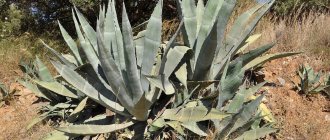When can a rose turn into a rose hip?
Varietal roses have difficulty surviving the winter in our climate. Therefore, technologists make a graft: they take a frost-resistant rose hip root and graft a varietal rose onto it. And it turns out that the root of the plant is from rosehip, and the stem is varietal (and the flowers too).
The stem of a varietal rose cannot turn into a rose hip! This is out of the question.
A rose can turn into a rosehip in only one way - when the so-called root shoot or root shoot comes from the rosehip root and from the stem BELOW the graft. These are really rosehip shoots.
Such escapes are not a restocking. But they must be removed, and cut out completely. If this is not done, the rose will eventually go completely wild and turn from a varietal rose into a rose hip.
So, if you find a suspicious shoot on your rose bush, then let's figure out whether it is a varietal one or not.
A little about roses
Observing roses, which are popular everywhere, you may not notice that much has changed in recent years, and the accumulated changes are already beginning to be actively put in order and classified. Patio roses and groundcovers are separated into special groups. Climbing miniatures appeared with unusual small flowers and tiny leaves.
Many articles have been written about new varieties; we will tell you a little about flower shapes. According to the shape of the flowers, roses are divided into 9 main types:
- With a cone-shaped center - buds of a classic shape, characteristic of hybrid tea varieties, in which the petals are curled into a cone.
- Peony-shaped or spherical shape - numerous petals are concave inward, covering the center of the flower.
- A form with a loose center - loosely closed petals form a core of indefinite outline.
- Collapsed form - at the end of flowering, a flower of an initially regular shape loosens, the petals seem to fall out, exposing the stamens.
- Cup-shaped - numerous rose petals form a cup, the center of the flower is not covered.
- Square shape - the inner petals create, as it were, four sectors located radially outward of the flower.
- Pompom shape - numerous short petals form a round, almost spherical outline of the flower.
- Flat shape - a flower with numerous petals, slightly concave towards the middle of the flower.
- Rosette-shaped - the whole flower flows down to the middle, there is a concavity, but its shape itself is flat with numerous short petals.
Studying the differences between rose hips and roses, four main differences in shoots were identified. A brief description of rose hips is given, and their decorative qualities for the garden are given. The description of varietal roses shows their modern classification based on differences in flower shape. Roses and rose hips are very interesting crops for homestead farming; it is always a pleasure to watch their growth and flowering.
Hello, dear gardeners and gardeners! Many people have rose bushes on their property and the question may arise: is it a rose or a rosehip? Essentially, a rose is a cultivated rose hip. In order to determine what kind of plant it is, there are several ways. One of them is to count the number of leaves. If there are seven of them on one branch, then it is a rose hip, and if there are five of them, it is a rose. But this method is not entirely correct; there is a more accurate way to determine whether your rose has woken up after winter? This is based on the color of the stem: if the stem is a little purple, then it is a rose. Such a stem becomes green over time. There is a third way - dig up the base of the rose bush to the grafting point and make sure that your plant grows above the grafting point. If below the grafting point it is a rose hip, if above it is a rose. Those that grow in bushes are floribunda, and those that grow with one bud at a time are hybrid tea roses. These plants are susceptible to attack by aphids; unlike berry bushes, the rose can be treated with Actor (a chemical preparation). The decay period of Aktara is 20 days. I do not use this product exactly according to the instructions - I do not spray it, but pour it under the roots of the plant.
**************************************** ********************To get a good harvest, you should approach the issue wisely. The Harvest Beds channel contains unique experience and reviews from hundreds of Siberian gardeners and gardeners (including those with an agronomic education) on breeding and growing a variety of plants. We review gardening tools and equipment and show how you can make various gardening tools with your own hands. A little about farming. We share recipes for cooking. We'll tell you about indoor plants and flowers and much more. **************************************** ********************Even more information on our website - https://goo.gl/PjNUxISubscribe to the Harvest Beds channel - https://www.youtube.com /channel/UCIL4...Our group on VKontakte - https://vk.com/urozhainye_gryadkiOur group on classmates - https://ok.ru/urozhainyegryadkiWe are on Instagram - https://www.instagram.com/urozhainye_...Facebook page https: //www.facebook.com/urozhainyegr…
How to determine that it is a rosehip shoot
Look where the suspicious escape is coming from.
If the shoot comes from the ground, then carefully and carefully dig up the graft or the soil around the suspicious shoot and see where it comes from. If our shoot does not come from the graft, but from the root, then this is a rosehip shoot.
How it all looks is shown in the figure.
If the shoot comes almost from the graft , and you find it difficult to determine whether it is a varietal or not, then observe for a week or two. If it starts to grow much faster than other stems, then 99% it is rosehip. Such a shoot must be cut out completely! If it grows like other shoots, then watch further.
What such a controversial escape might look like is shown in the figure.
If you find that a suspicious shoot is going above or below the graft
, then this is definitely not a rose hip, but a varietal rose. And here you need to understand what exactly causes you doubts. Young varietal shoots may differ in appearance from old varietal shoots. This can be either a normal feature of the variety or a consequence of improper care or stress.
Let's deal with doubts regarding appearance.
During flowering
In fact, a rose is a rose hip, only cultivated. It is quite easy to distinguish them from each other. There are, of course, exceptions, but for novice gardeners they are rather informative. During the flowering period, it is very easy to distinguish an ornamental plant from a wild one.
The first flower usually has a lot of petals, while the second has only five. Also, when looking at a rose, you rarely see its middle. There are varieties where it is open on purpose, but they still have a lot of petals. In rose hips, the yellow center is always visible. Rose bush flowers have a huge number of shades of flowers - from white to almost black. Rose hips only have white, pink or hot pink flowers. But there are examples of the opposite.
For example, the decorative variety "Mermaid" has only five petals, like a wild plant, but the wrinkled rosehip has up to 182 petals in a flower, like a rose. These cases, like the varieties mentioned, are rare.
And such differences are known only to experienced gardeners. To distinguish a wild plant from a noble one, it is enough to look at the differences as a whole.
Did you know? Found fossils and remains of roses indicate that this plant appeared on earth more than fifty million years ago.
How to distinguish a rose from a rose hip: visual differences
Let's say you don't like leaves, a flower -
that is, something visual. The most common requests are : “it has 7 leaves” or “it has green, not red shoots”, “it has a lot of thorns”, “a neighbor said that only rose hips have 7 leaves, and she is an experienced gardener”….
These are all myths.
Now breeding offers us such an abundance of varieties that it is 100% possible to distinguish a rose from a rose hip only by comparing the varietal qualities. Therefore, look at what your rose variety looks like according to the breeder’s instructions and your bush according to its characteristics: the shape and color of the leaves, the color of the shoot.
There are three
RELIABLE ways to determine the variety:
1) The point from which the questionable shoot comes. If it's from vaccination, it's a rose. If from the root, it is rosehip. We talked about this above.
2) Flower. Rose hips are big
core and non-double (petals in one row).
3) Characteristics of the variety that are the norm. Compare the performance of the variety with your rose.
How to deal with it
In the 3rd–4th year, the first growth of the rootstock may appear, so it is worth carefully studying all the young shoots. If the first sprouts of a “wild” rose appear, drastic measures must be taken immediately.
- Determine the place of rosehip germination (roots with “wild shoots” can grow up to 50–70 cm from the mother bush) and completely dig them out.
- The shoots are cut with pruners or a sharp knife at the base of the root (without leaving a single bud).
- The cut site is treated with iodine or garden varnish.
Re-sprouting rose hips are immediately removed again. This can be repeated 2-3 times per season. Proper care and adherence to agricultural technology will not allow wild plants to displace the “cultural” grafting. High-quality seedlings develop quickly and rarely give rose hips the opportunity to express themselves.
Budding is a common method of propagating roses, because grafting roses is much more effective and cheaper. In order not to deny yourself such pleasure and to receive an abundance of pink in your own flowerbed every year, you need to be patient and not be lazy. If you regularly fight wild growth and follow the agricultural practices of cultivated roses, the flower garden will delight you with its aroma and surprise you with its beauty from late spring to late autumn.
How to distinguish a rose from a rose hip by leaves and color
Almost nothing! These criteria are NOT reliable for comparing a rose to a rose hip:
1) The leaves of the rose are dark green, those of the rose hip are light. In fact, there are varieties of roses with light foliage. And a rose could simply have chlorosis, a virus, or a lack of microelements, which is why the leaves on individual shoots also become lighter and cause suspicion.
2) The leaves of the rose are leathery and shiny, while those of the rose hip are rough, matte, sometimes with pubescence. And this sign may not work: for example, many David Austin roses have rough, light foliage.
3) The rose's young shoots are red, the old shoots are green or woody. Rose hips have bright green and thin shoots. But even here the sign fails: many climbing roses, floribundas, and Austin roses have bright green young shoots. Example in the picture.
Characteristic features of various types
Each type of rose has its own unique features.
Hybrid tea
The most numerous species. They grow from 60 cm to 1 meter in height. The bushes are slightly spreading, the branches are straight. They have very high quality flowers. The main characteristic is the pointed shape of the inflorescences. Flowers are double and densely double. They look very impressive as a standard plant.
English (David Austin)
Roses from a famous English breeder. Tall, have a very large, wide flower. A distinctive feature is the strongest aroma. The number of varieties of this group is already more than 200. However, officially, they have not yet been identified as a separate species. They have incredible demand in the flower market.
Climbing
This is the name for roses with long shoots that entwine the support. They decorate arches, canopies, and pergolas. There are two types - creeping and climbing. The former bloom once a year and require annual pruning. The latter have several waves of flowering per season. No pruning needed.
Polyanthas (multiflorous)
Dense, small bushes up to 40 cm tall. Small flowers are collected in large inflorescences - up to 100 roses in one. They have almost no smell, but they bloom continuously from late spring to late autumn. They tolerate frost well. In greenhouse and indoor conditions, forcing is possible.
Park
These include ancient varieties that can survive harsh winters in open ground. A bush one and a half meters high. They bloom in early summer for about a month. The flowers look like rose hips. Their color varies from white to purple. Sometimes it is orange. Used in group plantings and hedges. The wrinkled rose also belongs to this species.
Ground cover
This is a new group. Roses of this type are easily recognizable: the branches grow mainly to the sides, sometimes up to 4 m. The height is no more than 50 cm. The flowering is long-lasting. They have shiny leaves. They grow in a continuous carpet. Some varieties of this type bloom once, others 2 times. Serve as an excellent decoration for any site. They don’t get sick and aren’t afraid of frost.
Standard
They are not a separate species. These are roses grown using special techniques. A cultivated rose is grafted onto a single, long rosehip shoot. It can be of any variety and type. It turns out a pink tree in the form of a huge bouquet. It is considered the best garden decoration.
Miniature
This species was recently bred by breeders. The height of the bush is from 15 to 25 cm. The stems are densely covered with small, shiny leaves. They can be with or without spikes. The flowers are very small, of different colors. They bloom singly or in inflorescences until the first frost. Grown in borders or in containers. Growing in an apartment is allowed. The species tolerates frost well and does not get sick. It is weakly affected by pests.
Curb
Low-growing shrubs up to 70 cm high. They quickly take root in a new place. They bloom long and profusely. They differ from ordinary roses in their double flowers with fancy edges and unusual shapes. Can be grown in apartments.
Bush (another name is scrubs)
Large bushes up to 2 meters high. They can be either upright or semi-climbing. Less capricious than tea varieties. Pruning is not difficult even for beginners. They require shelter for the winter. Flowering is long and abundant. They are used in both vertical and horizontal gardening.
The method proposed above for determining the type of roses, of course, will require some work, but if you delve deeply into its essence, you can very well become the owner of the key to solving any grown flower.
Climbing rose Flammentanz, second year. It produces layering, but I don’t understand what it is: a rose or a rosehip. The shoots are red, thick, the leaves are large, dark green and glossy. Five leaves each, nothing, but after a while another pair of leaves appears. This is confusing, I know that a rose has 3-5 leaves. And here it is seven. That year I removed two powerful shoots. Three have already come out in this one. What to do? Should I remove it or wait until it grows? I'm afraid they'll kill the rose. I'm not an experienced rose grower, so I'm asking for help!!! Dear rose growers, I am asking you for help. This is the third year I’ve been waiting for the Louise Odier rose to bloom. The first year I bought a rose, I saw its half-opened bud, but... in the fight against aphids, I overdid it and burned the leaves with drugs, it dropped everything that was on it)). In the second year, I looked forward to its flowering, but in vain. The imaginary beauty grew, gave growth, grew in width and height, but did not show her face.)) This is the third year. The bush, in relation to other roses (this is in our Kamchatka conditions), has grown spreading, fluffy and relatively tall. But here it is already August, and there is not a single rudiment of a flower ovary on the rose. But here!! It happened!!! I discovered a vertical growth with 3 buds on one branch. I was waiting. And well...What I saw exceeded all expectations! I still didn’t understand what THIS was. I am attaching a photo. Experts, rose growers, I would like to know your opinion Dear rose growers! In the fall, I bought three rose bushes without a name, but with large dark purple flowers, a stunning aroma and good root growth. Now new shoots, bright green in color, and 5-7 leaves each, are growing from last year’s pruned branches! I read that 7 leaves are a rose hip, but new shoots grow not from the root, but from the branches that had roses on them last year! What does it mean? Has the rose been reborn as a rosehip? And these bushes grow more actively than all the others! Dear rose growers! Last year I planted several bushes of climbing roses; new shoots with sparse thorns were expelled from last year's rose shoots, and the new shoots are all strewn with frequent small thorns; the color and shape of the leaves on the new shoots do not differ in appearance from the first ones. Tell me, is it the rosehip that has come out or not? Rose - Crown Princess Margareta. link to photo (on the left - a suspicious new escape): https://s020.radikal.ru/i718/1605/63/a52c705d101b.jpg photo2 (suspicious escape - the farthest left): https://s019.radikal.ru/ i614/1605/af/0bfa634eea42.jpg photo3 (NON-suspicious escape close-up, for comparison): https://s020.radikal.ru/i710/1605/f1/bb2e3214c1bf.jpg photo4 (suspicious escape close-up): https:/ /s017.radikal.ru/i442/1605/6c/f25512c9c843.jpg another new suspicious escape: https://s018.radikal.ru/i507/1605/89/fd3f23e46bdd.jpg
I noticed something similar today on the indigoletta: 4 new shoots, densely thorned, but still too small to draw any conclusions, 4-6 cm tall for now... The Rhapsody in Blue seedling from Ovcharov was planted in the fall of 2015. Has not yet entered into force. Recently it produced a large shoot, about 0.5 m, lighter than other foliage, without a hint of a bud and with 7 blades on the leaves. I decided that it was wild and removed it. True When I dug it up, I didn’t understand where it grew from. And now I’m thinking, maybe it’s Basal, because I found 7 plates on other leaves and the spines on them are very powerful, but not so on rose hips. I hope that experienced rose growers will determine from the photo what it was. I don’t want to make such annoying mistakes in the future. Also, is it possible to root it?
, ,
By what criteria can you accurately distinguish a rose from a rose hip?
1) Thorns - roses are large, rose hips are small and there are many of them. But! It happens that a rosehip shoot grows without any thorns at all. This criterion cannot be assessed.
2) Flower size. Flowers may become smaller if the rose lacks nutrition/sun.
3) Please do not rely on the number of leaves on the petiole!
The story about the fact that only rose hips have 7 leaves, while roses always have 5, is a myth. Many frost-resistant hybrid varieties of climbing, floribunda, scrub, Austin, bush and groundcover varieties have from 3 to 9 leaves on one shoot. For example, the same “Canadians” on one branch on the petioles can often have 5, 7, 9 leaves at the same time. This is due to genetic memory: hybrids “remember” their wild ancestors and produce petioles with their characteristics.
Which rose has 7 leaves
First, remember what type of rose you purchased. It is no secret that many floribundas (Carte Blanche, Red Leonardo da Vinci), climbing plants (Polka, Super Dorothy, Flammentanz, Rosarium Uetersen), groundcovers (Lipstick) and scrubs (Caramella, Maiden's Blush) can have leaves of five, seven or even nine leaves.
If you purchase seedlings from a nursery, do not hesitate to ask the seller and find out what to expect and what is the norm for roses of this species. If the bush was purchased in a shopping center or online, study the characteristics of the variety - look for information about it on websites about roses or read specialized literature.
Rose variety Red Leonardo da Vinci can have 5, 7 or even 9 leaves in a compound leaf
A larger number of leaves than you are used to seeing primarily indicates that the memory of wild ancestors is strong in the pedigree of your rose. Even the most beautiful and cultivated roses can periodically throw out a few atypical leaves without losing their decorative properties.











